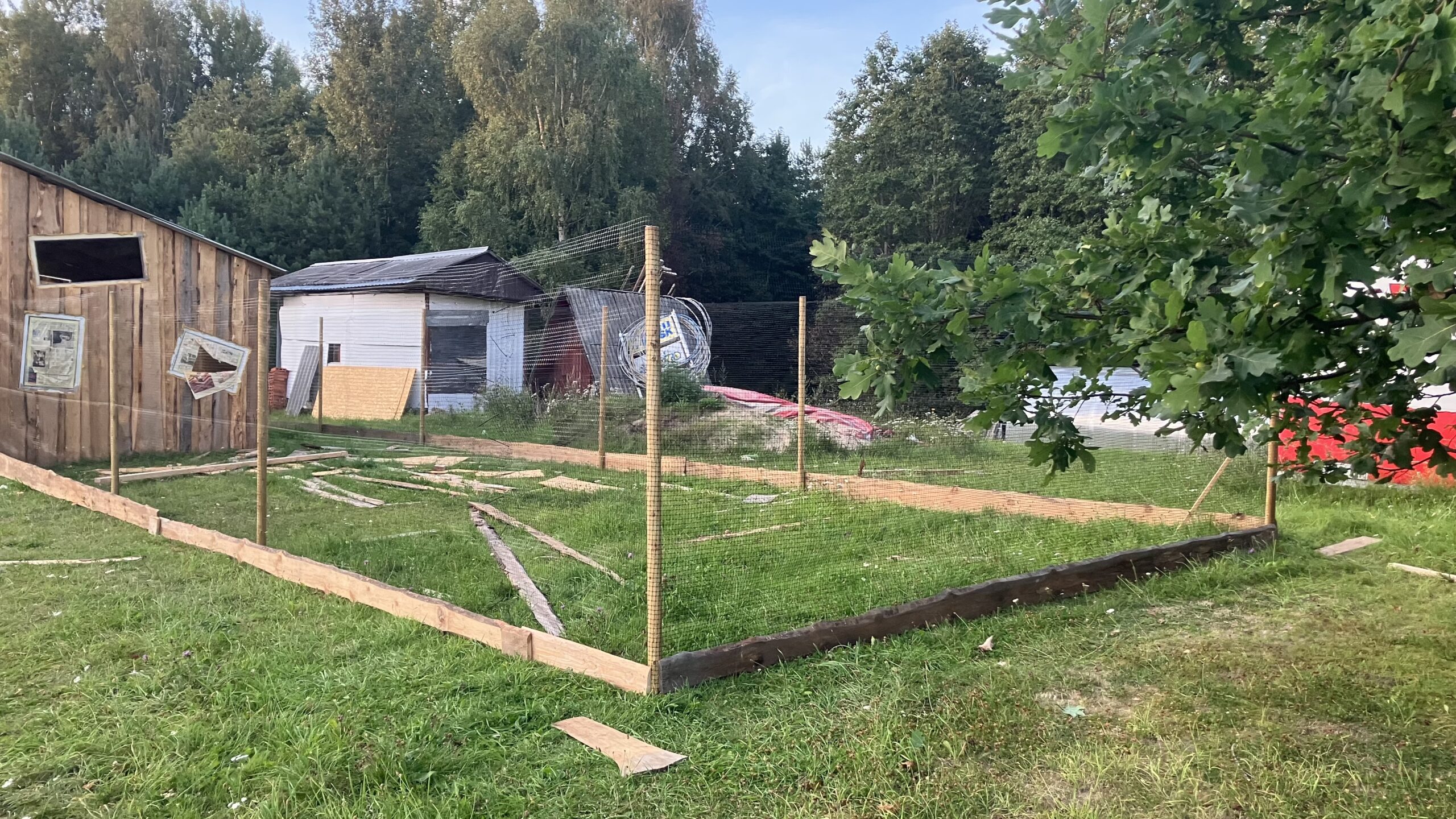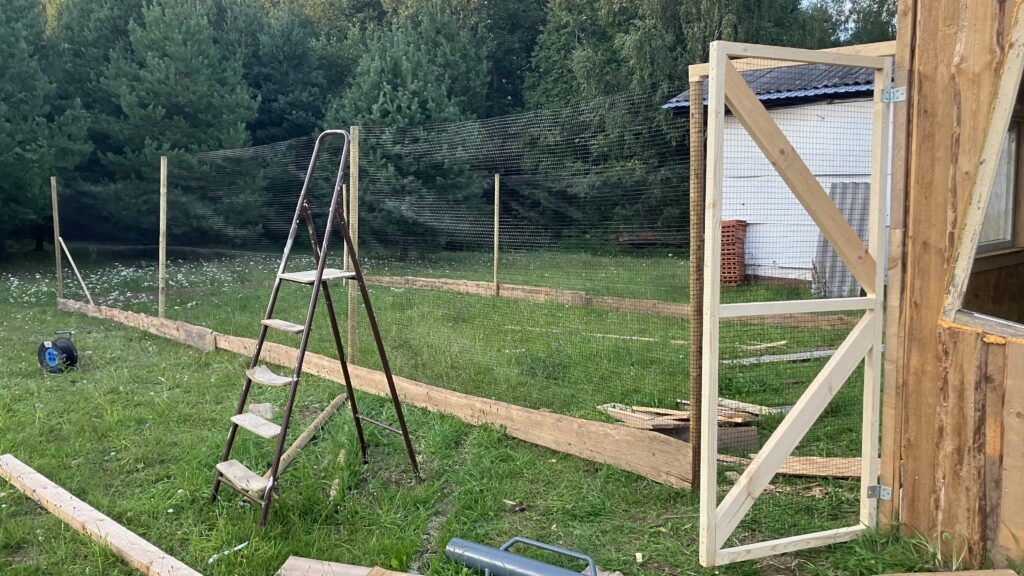There’s a satisfying sense of accomplishment that comes with completing any fencing project, but when it’s protecting your animals, that satisfaction runs even deeper. The fence is finished, and our chickens are one major step closer to having the secure, predator-proof run they deserve.

More Than Just Boundary Markers
This fence represents far more than just marking territory or keeping chickens contained. In rural Estonia, where foxes, martens, birds of prey, and other predators are a constant reality, proper fencing is the difference between having a flock and losing a flock. Every post driven, every wire stretched, every connection secured is an investment in the safety and well-being of our birds.
Building a fence that can withstand both the daily wear and tear of active chickens and the determined efforts of hungry predators requires careful planning and quality materials. It’s not just about keeping chickens in—it’s about keeping everything else out.
The Construction Challenge
Fencing projects always seem more straightforward on paper than they prove to be in reality. Dealing with uneven ground, ensuring proper gate clearances, maintaining consistent spacing and tension—each challenge had to be solved as we worked our way around the perimeter.
The physical work of digging post holes, carrying materials, and wrestling with wire mesh is demanding under any circumstances. But there’s something deeply satisfying about this kind of hands-on construction work, knowing that every hour invested is directly contributing to the security and happiness of our animals.

Still Work to Do
We still have to add the top net. That overhead protection is crucial for complete predator security. Ground-based fencing handles terrestrial threats like foxes and other mammals, but birds of prey are a significant concern for chicken keepers. Hawks, eagles, and other raptors can devastate a flock if they have easy aerial access.
The top netting will complete the protective envelope around our chickens, giving them a secure outdoor space where they can scratch, dust bathe, and enjoy fresh air without constantly looking over their shoulders for threats from above.
Learning Curve
Every fencing project teaches you something new about construction, problem-solving, and the specific challenges of your property. This project was no exception. We learned about proper post spacing for our soil conditions, the best methods for maintaining wire tension across uneven terrain, and the importance of planning gate locations before you start setting posts.
These lessons will serve us well as we continue to develop the farm infrastructure. Fencing skills transfer to all kinds of agricultural applications—pasture fencing, garden protection, equipment storage areas. Building these capabilities now means we’ll be better prepared for future expansion projects.
Security and Peace of Mind
With the perimeter fence complete, there’s already a noticeable difference in how confidently the chickens use their space. They seem to understand, in that instinctive way animals have, that they’re in a more secure environment. There’s less nervous behavior, more natural foraging and social interaction.
For us, the completed fence means peace of mind when we’re not directly supervising the flock. No more constant worry about predator threats during the day, no more rushing out at the first unusual sound from the chicken area.
The Final Touch
Once the overhead netting is installed, our chickens will have what amounts to a secure outdoor paradise: protection from all angles, plenty of space to exhibit natural behaviors, and the confidence that comes with feeling safe in their environment.
The fence completion brings us significantly closer to that goal. It’s another major milestone in creating the kind of comprehensive, well-planned animal housing that makes farming both more enjoyable and more sustainable.
Progress and Investment
Every piece of farm infrastructure we build or improve is an investment in the long-term success of our operation. This fence will protect multiple generations of chickens, provide security for years to come, and demonstrate our commitment to responsible animal husbandry.
The fence is done, and it feels great. Now, on to that top netting!
What’s your approach to predator-proofing chicken runs? Share your fencing experiences and security solutions in the comments below!
Have you dealt with predator pressure on your farm? Tell us about your protection strategies and lessons learned!